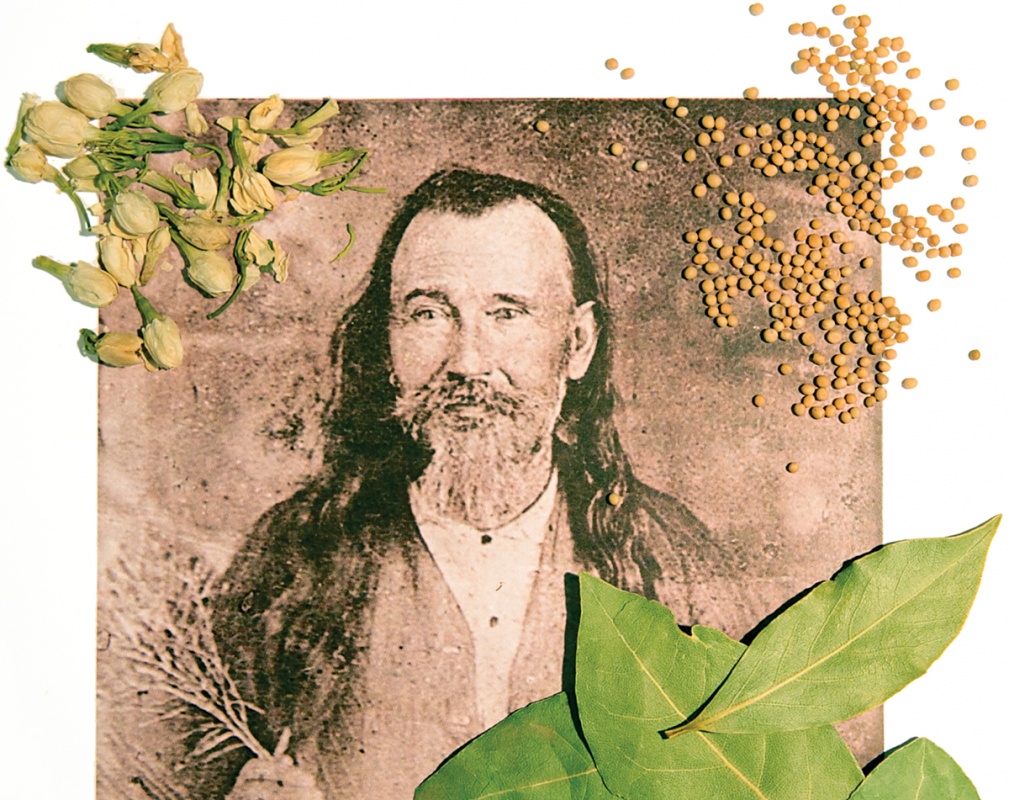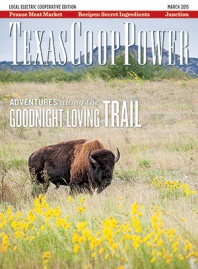When Dr. Benjamin Thomas Crumley died in Lampasas County in 1901, family members could not believe that “the Old Indian Doctor” was truly gone. They held a mirror under his nose to check for breath. After all, Crumley had treated Central Texans with plant-based remedies for nearly half a century.
In 1879, the Williamson County Sun reported that Crumley “was considered, to some extent, an oddity because he wore his hair very long.” The Sun noted that at his third wedding, “the Doctor had his hair platted up and roses stuck about it.”
Crumley’s descendants have traced his story through an intriguing tangle of fact and folklore. Great-grandson Larion Crumley of San Antonio says the doctor was born in Cherokee Nation, South Carolina, in 1822. Some believed that he did attend medical school. One legend says that he was expelled from a university after a night of heavy drinking.
Crumley maintained that he was part Cherokee, and another family story has him studying medicine with the Cherokee for seven years. After serving in the Civil War (and possibly in the Mexican War before that), he was living and doctoring near Martindale in Hays County during the 1870s. When a flood destroyed his home, he relocated to Buttercup near present-day Cedar Park, where he also served as postmaster.
Descendants report that physicians in Austin often called on the Old Indian Doctor for consultation. Another story holds that mysterious horsemen once came to Buttercup, blindfolded Doc Crumley and led him to a remote hideout, where he patched up the wounds of outlaw Sam Bass.
Jim Sims, another great-grandson, was treated with the Old Indian Doctor’s remedies, as they were passed down through the family’s oral tradition. “He used horehound for coughs, colds, sore throats and lung troubles,” says Sims. “It was administered as a syrup made by boiling the plants in water. Sassafras was administered as a relaxant and to settle the stomach. It was prepared from thin shavings off the roots that were steeped to make a tea. He treated chest colds with mustard seeds that were crushed and placed in a small amount of hot water to make a paste that was used in a poultice. Willow bark was used as a pain reliever, and Johnson grass or broomcorn tea was prescribed for kidney and urinary problems. Chicory root was roasted, ground and brewed in hot water to be consumed as a sedative and also for its laxative effect.”
Crumley also relieved pain with opium and morphine. Great-great-grandson Scott Crumley, an Austin pharmacist, says family history indicates that the doctor himself became dependent on morphine, which he took to treat a chronic war wound. Whiskey, coal oil, castor oil and the patent medicine Pitcher’s Castoria rounded out the Old Indian Doctor’s pharmacopeia.
The doctor’s saddlebag held a trusty madstone for treating rabid animal bites. Said to be found in the stomachs of deer, madstones could reportedly draw the poison out of a fresh wound or bite. Larion Crumley recalls seeing the heirloom stone as a boy: “It was an oval, quartz-like stone about an inch and a half in diameter and three-quarters of an inch thick.”
Crumley relocated to northern Lampasas County near the community of Evant in 1890, where folks long remembered seeing him wearing a white linen suit, riding a white horse to visit patients.
One evening in 1901, as granddaughter Beulah Thomas Crumley combed his hair, the doctor said with tears in his eyes, “Sweet, this is the last time I’ll see you.” Called out to deliver a set of twins, Crumley suffered a heart attack on the trip home. By morning, the Old Indian Doctor was gone.
——————–
Gene Fowler is an Austin writer who specializes in history.


